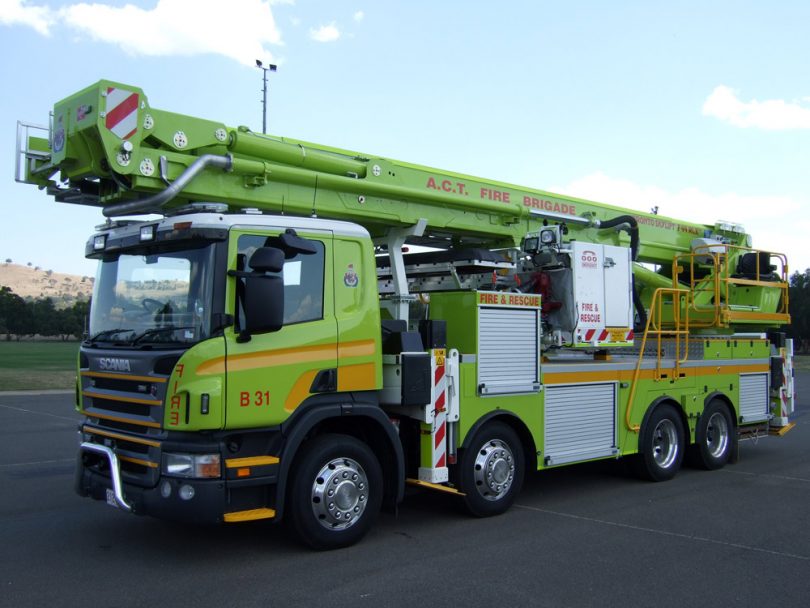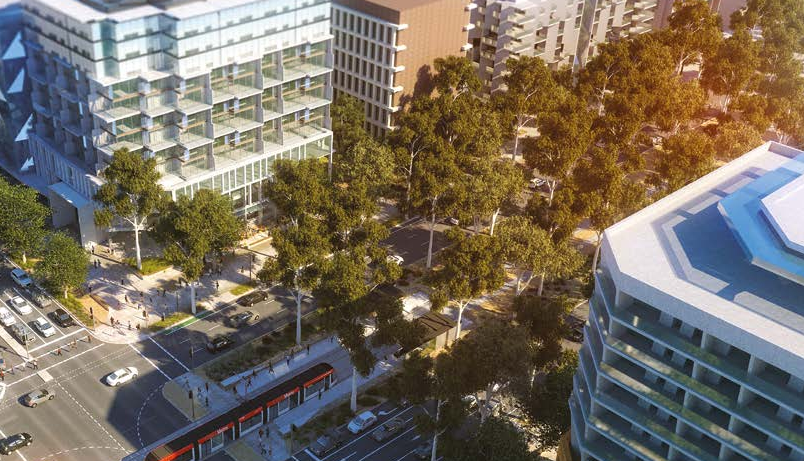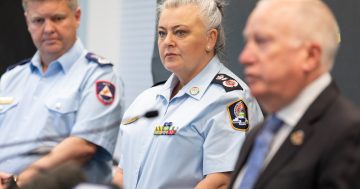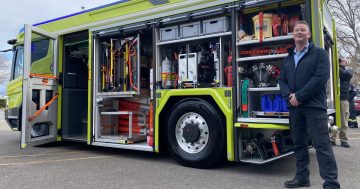
ACT Fire and Rescue’s single aerial ladder appliance known as the ‘Bronto’, used for high-rise firefighting. Photo: ESA.
The Chief Minister may believe the future of Canberra is up but the increasing proliferation of multi-storey buildings in the ACT begs the question whether our fire-fighting capabilities are keeping pace with the city’s growth.
Funding in this year’s budget for a new aerial pumper to complement the aerial ladder appliance known as the ‘Bronto’ acknowledges this growth but the firefighters union says that while welcome, it was long overdue.
“We should have had one long ago, acquiring a second one should not be the end of the matter,” said United Firefighters Union Secretary Greg McConville.
He said that the problem with having only one specialist appliance is that as soon as it is deployed there are risks elsewhere, and the Bronto had regularly been off the road leaving the city exposed.
The Union’s 2018 Budget submission said that a jurisdiction the size of the ACT needed up to three aerial appliances in commission at any time, to allow for all year fire protection in the event of large incidents or an appliance being repaired.
Mr McConville said ideally the ACT should have three to four Brontos but ‘two Brontos and an aerial pumper is about where we should be’. The Canberra Liberals promised a second Bronto in the 2016 election campaign.
The Emergency Services Agency (ESA) says it regularly and routinely reviews the risk profile across the ACT and is very confident that the two aerial appliances will provide sufficient operational capability for firefighters to deal with emergency incidents in high-rise and medium-rise buildings into the future.

The new aerial pumper is aimed at areas like the future Northbourne Avenue precinct.
Chief Fire Officer Mark Brown said the aerial appliances were not seen as the primary source of fire protection, with firefighters relying more on building design and the National Construction Code requirements, including fire separations, fire doors and fire stairs, and buildings over 25 metres high having sprinklers.
But Mr Brown said that given the increase in densification down the Northbourne Avenue and Civic precincts, particularly medium rise buildings which don’t have sprinklers, the need was there for an aerial pumper.
He remained adamant that the ESA expected a building to perform to requirements.
“We don’t treat them [buildings] as if there is going to be a major conflagration and we need a whole fleet of aerial appliances to deal with it,” Mr Brown said.
He said data from incident reports and commissioned modelling guided the Agency on how it met fire risks in the light of planned future growth around Canberra.
But Mr McConville said the population of Ballarat, Bendigo and Geelong combined was roughly the size of the ACT and they had at least four aerial appliances.
He challenged the ESA’s planning and risk assessment, saying the statistics it had relied on in the past had been shown to be flawed.
“Even if the statistics are right, it’s dangerous to say that you’re building firefighting resources on the basis of utilisation,” he said. “If that is the basis of building capacity then there will obviously be an event in the future where you will be found wanting.”
The union had not seen anything in terms of risk analysis, assessment, or projections of what requirements there would be into the future for things such as specialist firefighting appliances.
Mr McConville suggested revenue from the Fire and Emergency Services Levy should be able to fund more appliances.
Asked whether two appliances will be enough to cover medium to high-rise buildings from one end of Canberra to the other, Mr Brown said the ESA would continue to monitor the risk, and that an additional aerial pumper addressed that risk in the medium term.
“We’ll continue to look at it but Canberra’s not a high-risk environment. The medium and high-rise buildings are well constructed, we don’t have many fires in them, firefighters are very familiar with those buildings, and if we need more in the future we’ll go back to Government for further funding,” Mr Brown said.
Procurement is underway for the aerial pumper but the issue of crewing is still to be resolved.
Do we have enough fire appliances to deal with the growth in apartment blocks? Is densification increasing the fire risk? Are we getting full value from the fire and emergency services levy?














